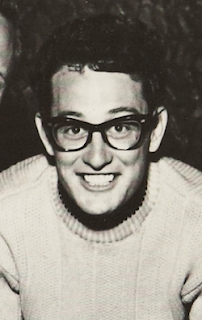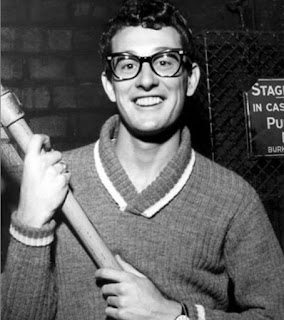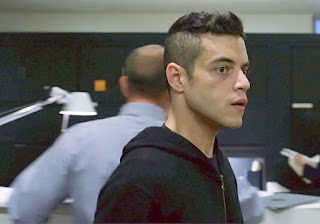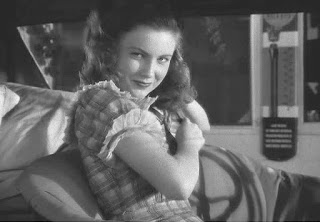If you took James Ellroy at his most imaginative and Oliver Stone at his most conspiratorial, and mixed them up in a supersized martini shaker, you would produce the vivid writing, explosive events, and irresistible entertainment of Fever City.
The story kicks off in 1960 Los Angeles, with the daring kidnapping of the child of one of America's richest men. It then darts back and forth between a private detective's urgent search for the child, the saga of a notorious hit man in the days leading to JFK's assasination, and the modern-day story of a skeptical journalist researching the still-active conspiracy theories of the 50s and 60s, with the aim of debunking them. Just as the detective discovers that the kidnapping is a crime much larger than he imagined, and the hit man finds himself caught in a web that is astonighingly complex, the journalist discovers -to his horror, dismay, and even his jeopardy- that the conspiracy theories might well be true. Source: www.amazon.com
The plane crash that claimed the lives of three rock 'n' roll stars, including Buddy Holly, could be investigated afresh by US transport safety experts. According to the Mason City Globe Gazette, the NTSB received the request from a pilot from New England called LJ Coon. Source: www.bbc.com
Clear Lake, Iowa (May 1, 2015): The National Transportation Safety Board will not reopen the investigation of the plane crash in February 1959 that killed Lubbock-born rock pioneer Buddy Holly, Ritchie Valens and "Big Bopper" J.P. Richardson. The NTSB said Coon did not present enough evidence to back up his assertions. Source: www.kwtx.com
Gary W. Moore (author of Hey Buddy, 2011) discounted conspiracy theories alleging a gunshot from a handgun owned by Holly brought down the plane. Barb Dwyer, wife of Jerry Dwyer, who was the fixed base operator at the airport and owner of the plane, declined to comment on Coon's attempts to reopen the crash investigation. Source: globegazette.com
Rolling Stone critic Johnathan Cott eloquently singled out "Peggy Sue" as a masterpiece: "With Peggy Sue, he created the first rock and roll folk heroine. In Peggy Sue Got Married, Peggy Sue vanishes, like Lolita, into the mythology of American Romance." About this mythic Peggy Sue, the words revealed nothing other than that she made her moody paramour feel ‘blue’, yet still love her ‘with a love so rare ’n’ true’. Where she came to life was in the ever-changing shades and shifts of Buddy’s voice, her name repeated over and over like a mantra – now murmured in tongue-tied bashfulness, now stretched to a six-syllable schoolyard taunt (‘Sue-oo-oooo-oo-oo’), now hiccuped, now sighed in rapture, now transmuted into a ringing four-chord eulogy, perhaps the most infallibly nerve-tingling solo in all rock ’n’ roll.
The Real Buddy Holly: In truth, Lubbock always went on with or without Buddy Holly, the city’s only world-famous native son. Two decades passed before city officials, in the wake of a Hollywood film depicting Buddy’s life, saw fit to erect a statue of the great musician. This seeming apathy has been a matter of considerable outrage among Holly fans, but one acquaintance of Buddy’s suggests that Buddy would have had no hard feelings. “There’s a stubbornness in Lubbock, which Buddy himself had,” says Peggy Sue Rackham, the woman immortalized in two Buddy Holly songs.
Understanding Buddy Holly is a different matter. He could be numbingly shy or obnoxiously self-confident depending on whether he was holding a guitar at the time. Even his musical genius is hard to nail down. As a lyricist, he was disarmingly cavalier. He was a stealth rocker, that hayseed grin and those impossibly daft glasses making the world safe for the audacious overtures suggested in “Rave On,” “Oh Boy!” and especially “Not Fade Away”: “I’m gonna tell you how it’s gonna be/You’re gonna give your love to me.” While Elvis’ gyrations were inducing panic in the world, Buddy was slipping hedonism through the front door like a bouquet proffered by a happy-faced delivery boy.
His was a triumph of subversion; but how such a feat grew out of a perfectly ordinary boyhood in Lubbock is an astounding mystery, one that no one has ever come close to solving. Amburn’s primary source for Buddy’s teenage antics is a Lubbock musician named Tinker Carlen. If only there had been loose Lubbock women in the fifties to have had one’s way with, several of Buddy’s male pals lamented to me, adding that Buddy was every bit as unlucky as they were. Similarly, several of Amburn’s sources scoff at the author’s theory that Buddy had a drinking problem, “He wasn’t even a moderate drinker,” Sonny Curtis told me. Leaden with errors, Buddy Holly: A Biography would be merely an embarrassment if it weren’t fundamentally mean-spirited.
Buddy Holly was on a roll. In June, while visiting his music publisher in New York, he laid eyes on the company’s ravishing Puerto Rican secretary, Maria Elena Santiago, asked her out that night, and proposed to her over dinner. In August the couple were married in the Holley home. They returned to Manhattan and moved into a Greenwich Village apartment. Despite his multitude of hit singles, Buddy was broke: The royalty money was tied up in the account of his manager, Norman Petty. Buddy convinced the Crickets that they needed to wash their hands of Petty and move permanently to New York, where they could get better representation. After a tour in late October, they converged on Petty’s studio in Clovis. But Buddy and Maria arrived to find that the Crickets were already there, and that Petty had talked the boys into staying with him. “I want my money,” Buddy said. According to Maria, Petty replied, “I’d rather see you starve to death first.” Source: www.texasmonthly.com
In order to allow J.I. Allison to impress the real Peggy Sue, Buddy gave him the songwriting credit on the record. For his own reasons, Norman Petty added his name. Buddy could take someone else’s song and make it his own with a vastly superior rendition. By contrast, nobody, not even the Beatles, ever took a Buddy Holly song and improved upon his own recording of it.
Exactly why ‘That’ll Be The Day’ took so long to get into the charts never has been satisfactorily explained. For most rock ’n’ roll classics, success has appeared soaringly effortless with the frenetic pace at which America’s record business operated in the rock ’n’ roll fever of early 1957. The blend of sounds, which has seemed unimprovably right to modern ears, was an unusual, even eccentric one in mid-1957. And the voice sounded unlike that of a potential teenage idol, being totally lacking in sexual suggestiveness, self-pitying angst or any other clue that its owner belonged to the same generation as Elvis, Ricky Nelson or Eddie Cochran.
June Clark was a highly attractive woman, slim and wavy-blonde, with snub, big-eyed features glancingly like those of Brigitte Bardot, the French ‘sex kitten’. Her job on the cosmetics counter at Hull’s drugstore gave her an aura of glossy, nylon-crisp untouchability. But she found herself increasingly drawn to Buddy for his charm, his kindliness, his singleminded ambition and the dark, lonely depths in him which now and then revealed themselves. ‘I knew he liked me because he was a normal young guy,’ June says: ‘But the thing he always wanted to do most when we were together was just talk to me.’ June had been prepared for a superficial flirtation. But the intensity of Buddy’s feelings began to alarm her. Forgetting the need for discretion, he phoned her constantly, and also took to hanging around the Hull drugstore. ‘He’d just stand there staring at me while I waited on customers, till it got to be really embarrassing and unnerving.’
Since groupies and drugs still were almost nonexistent pleasures of ‘the road’, having fun meant one thing only. ‘We’d sometimes be drunk in the morning,’ J.I. has since admitted, ‘and stay drunk all day.’ This slackness and unprofessionalism infuriated Buddy. Lubbock may have been slow to recognize his enormous fame, but at least that has prevented any hint of the tacky opportunism with which Elvis Presley is memorialized at Graceland. In death, as in his brief life, Buddy remains untainted by vulgarity. On a basis of simply counting heads, rock music surpasses even film as the most influential art form of the twentieth century. By that reckoning, there is a case for calling Buddy Holly the 20th century’s most influential musician. Elvis Presley and Buddy Holly are the two seminal figures of fifties rock ’n’ roll.—"Rave On: The Biography of Buddy Holly" (2014) by Philip Norman
In The Buddy Holly Story (1978), the legend from Lubbock, Texas, is reassessed in a thoroughly entertaining musical biography that mixes fact and fiction in equal parts, a practice Hollywood is unable to resist despite the potential for distortion and false allegations. Luckily, the film captures Holly's charm and stubborn individuality through Gary Busey's chameleon-like performance in the title role. As the story progresses from Holly's formation of his band, the Crickets, to his departure for a recording career in New York City, it also charts the evolution of some of the musician's most famous tunes. The Buddy Holly Story also took dramatic liberties with biographical details (the scene in the church where Holly's pastor attacks his music was fabricated - the two men were close friends in real life) and completely omitted Norman Petty, Holly's producer, from the story line.
For the actors, however, The Buddy Holly Story was a dream come true. Gary Busey, who was once a drummer with Leon Russell's band, threw himself into the lead role with such intensity that he began to resemble Holly, the result of heavy dieting and the makeup department's influence (horn-rimmed glasses and curled hair). He also got a charge out of performing Holly's music with co-stars Charles Martin Smith and Don Stroud.
Audiences and critics were into The Buddy Holly Story as well, and typical of the reviews was this assessment by Film Quarterly: "Director Steve Rash and Gary Busey have interpreted The Buddy Holly Story with an unpolished beauty that remains faithful both to the spirit of the man and to his music." The film went on to receive three Oscar nominations in 1978. Busey was nominated for Best Actor. He would later say he won the role of the late singer because "they finally realized I have the same-sized teeth." Source: www.tcm.com


































































